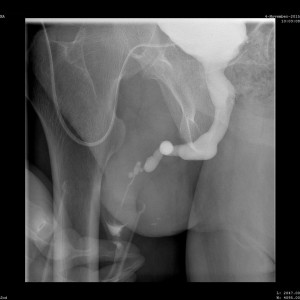I had my x-ray appointment a couple of weeks ago. It seemed to go much more easily than previous urethrograms; having a suprapubic catheter makes it much easier to fill the bladder with contrast. Unfortunately it turns out that the urologist had only ordered a voiding cystourethrogram and not a retrograde one.

That meant that there was too little flow after the stricture to fill the urethra. The radiologist initially concluded that there was a huge stricture all the way from the inner end of the graft right to the meatus. They looked at the pictures again, together with the urologists, and decided that instead it’s two very narrow strictures with about 5 mm between them.
Of course, it’s impossible to tell how long the outer stricture is, or anything else about the urethra after that point.
I’ve been communicating with one of the urologists by email and he seems oddly resistant to the idea of doing a retrograde cystourethrogram. The current delaying tactic is to ask a colleague in another county for advice. That of course means letters going back and forth in the post, so it’ll be at least another week before they hear back from him.
So it seems I’ll be stuck with the suprapubic catheter for quite a while longer. There’s basically no chance of getting anything useful done before Christmas now.
Here’s an animation from the cystourethrogram. You can clearly see how the urethra upstream of the stricture gets stretched by the pressure and how long it takes for the urine/contrast to get past the stricture.